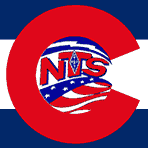About the CTNThe Colorado Traffic Net (CTN) is a directed VHF net that meets every evening between 7:00 and 7:25 PM local mountain time to handle formal National Traffic System (NTS) messages called "traffic" into, out of, and within the State of Colorado.The NTS is an organized network of amateur radio operators for the purpose of relaying messages. The NTS is most useful during emergencies when telecommunications infrastructure such as cell phone and land line telephone are inoperative. The CTN is an officially recognized NTS net which is sponsored by The American Radio Relay League (ARRL). Handling traffic efficiently and accurately requires practice. Therefore, the NTS commonly practices with routine messages such as greetings, congratulations, and license renewal reminders in order to hone the skills of its operators. We welcome and invite anyone and everyone to be involved! Why is NTS needed in an emergency?We all take our glorious electronic communicators for granted today. Got a problem? Search the web. Driving to work and realize you forgot to mail an important bill? Call home and ask your family to drop it off at the post office for you. Need directions? Just ask your phone.What if you suddenly lost the use of these wondrous conveniences? Who hasn't experienced this at some point? Poor signal strength, cell towers under maintenance, power outages, and more can take your connectivity offline. The more we rely on these amazing conveniences daily, the more annoyed we are when they don't work. Every part of the USA has its own type of natural disaster. When a strong quake happens in California, everyone there instinctually reaches for their cell phone to call family and friends, but when they do they usually cannot get a connection. There are several possible reasons, including power outage at the cell tower, physical damage to land lines that connect the towers to the phone system, or simply cell system overload due to the massive demand put on the cell towers by so many people trying to make calls all at the same time. However, there is yet another reason why your cellphone may not function during a natural disaster: the government may limit your access to insure that emergency workers and first responders can successfully use the system. You may have assumed that if you pay your bill you should be able to use the system, but in an emergency, Federal law says otherwise. If the government decides that other uses of the cellular system are more important than yours, you lose. There are several priority mechanisms that are available to local and regional emergency responders that could result in you not being able to access the cellular system or at least result in you having your use limited. Public safety can take over any working cell sites for their communications and block out the civilian users. When the usual channels of communication break down, for whatever reason, the NTS can step in. We practice every day so we can efficiently pass emergency, health and welfare messages for each other and for the general public when called upon. History of the CTNFor many years, there were several regional VHF traffic nets in Colorado that were spread out geographically. The regional nets gradually disappeared, except for the Central Colorado Traffic Net which survived and even thrived. As the last remaining VHF traffic net in Colorado, the Central Colorado Traffic Net was operating on a state-wide, linked system. Operators from this older net were no longer confined to the central part of the state and sought National Traffic System (NTS) recognition.On Sunday, September 7, 2014, nine operators from the old Central Colorado Traffic Net met with Colorado NTS Section Manager Jack Ciaccia (WMØG). The nine unanimously decided to form the Colorado Traffic League (CTL), a club to support a new, NTS recognized, explicitly state-wide traffic net. That evening, the CTL held the first Colorado Traffic Net on the Colorado Connection System of Linked Repeaters. The Colorado Traffic League adopted its Constitution on September 11, 2014. Shortly after, the ARRL formally recognized the Colorado Traffic Net as an NTS net and appointed the first Net Manager. ARRL Appointees
Local Traffic HandlersThe CTN frequently receives NTS messages originating from outside of Colorado. These messages require a local CTN traffic handler to deliver the message. This local delivery is what we specialize in, and we would love for you to be a part of it. If originating or delivering a message sounds like fun, please join us by handling your first piece of traffic tonight!Special ThanksThe CTN gratefully acknowledges the Colorado Connection for allowing us the use of their equipment. The Colorado Connection provides an emergency backup communications link to many mountain communities and throughout Colorado. Please consider a donation to the Colorado Connection as it is not membership based and relies on our continued support. |
